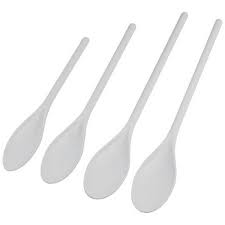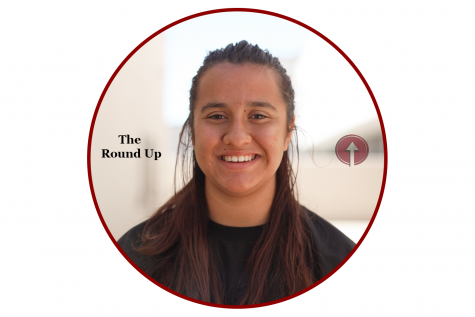Cooking 101 with Selema
Cooking is really simple–at least the way I do it, and I’m going to try to help you learn how to make food. So you aren’t that college kid, and so you can eat something other than ramen, cereal and Whataburger.
The other night I made fettuccine alfredo with chicken basically the way I always saw my mom do. This is simple, seasonings aside you need like 3 things. What a surprise, it’s fettuccine, alfredo and chicken. I use the already made alfredo, but I found a recipe one time that was simple and pretty alright. So just Google it if you want to do that.
How many servings are you trying to make? Usually I use a 16 ounce jar of sauce and a packet of chicken, I think that’s usually about a pound, and half a bag of noodles. The other night it fed me my roommate, his girlfriend and there was still like 2-3 servings left over. I always have anxiety it isn’t going to be enough, and it’s easiest to just use what you buy like 1 jar, 1 pack just so you don’t have to worry about storage and it going bad.
Okay, cooking time.
WASH YOUR DAMN HANDS! Also the Netflix show Sex Ed is hilarious, that’s where this is from.

Get a pot fill it with water, put it on the stove, add some salt and oil–I guess that’s optional–and set it on high. Whenever it starts boiling, not bubbling, put the pasta in. This becomes a fun game, we’ll talk about that later.
Moving onto chicken. Make sure you have the pan, cutting board, knife, music, everything just how you want you aren’t going to be able to touch anything for a bit because it’s time to get my least favorite thing in the world, raw chicken.
Cut that into bite sized cubes. And feel free to cut out some of the fat or not-so-nice-looking pieces, I call this trimming the chicken. Put the good pieces in the pan, you don’t need to oil it or anything, and the not good pieces in the package wrap it up and throw it away, careful not to touch like anything.
NOTE: I’ve noticed (from Albertsons) the chicken you buy from the people where you tell them how much you want usually needs a lot more help than the chicken that comes in the pack from the refrigerated/poultry section.
With all the chicken in the pan take the cutting board and knife to the sink, wash your hands, and make sure you really get where it feels sticky and gross. For me it under my nails and in the cuticles of my left hand. Clear one side of the sink for draining your pasta later.
With clean hands go back and grab seasonings. I use onion powder, garlic salt, lemon pepper, pepper and salt. But really anything will do. You can always taste it later and add what it needs. Throw that on the chicken and set the stove to a medium heat. Get something to move the chicken around with, like a spatula or one of those big plastic mixing spoons. Move the chicken around trying to cover all the chicken and get the seasoning off the pan. Spread it out evenly in the pan and let it sit for a minute, but not too long. We are going back to the pasta.

Explain: you put the seasonings on while the chicken is raw so that it cooks into it. The time I put the seasonings on when it was almost all cooked the middle was bland.
Your water should be getting ready to boil. If not watch your chicken and go down a couple paragraphs, come back when it’s boiling. Once you put the pasta in lower the stove down to a medium heat so that it doesn’t boil over. If you have a big pot with plenty of room up at the top you don’t really have to worry about this. If you are using a smaller pot, well, have fun. Lower it down a lot and slowly make it hotter. You have to figure out how to get it as high as you can without boiling over. This is a moving target.
Put the pasta in, get something to stir it with, for the sake of your pots and pans–and hands–don’t use a metal spoon. Wood or plastic. Then kind of smush it down so all the noodles are submerged. This will happen on its own, but it could take a while.
Go back to the chicken and move it around. Make sure you keep your chicken moving around, you don’t want it getting stuck to the pan or the seasoning burning onto it. Generally, once it starts sizzling I mix it around making sure to bring the pieces on the edge in the middle. The middle is generally the hottest and juiciest part. When you move it around it will stop making noise.
Lately, I’ve noticed the chicken gets dry as it cooks, when it shouldn’t because it usually lets out juices (likely melted fat, but I’m not a scientist I don’t really know). The way to combat this, slash make sure your chicken is soft and juicy is to cover it. If you don’t have a lid a big ceramic or glass plate will work as long as it can cover the chicken. Don’t worry about having to keep the lid on as much as possible as long as some juice sticks around your chicken won’t be dry.
Explain: The chicken steams from being hot, the lid/plate catches it, and then once it liquifies again it drops back into the chicken rather than just out into the air.
After you mix the chicken up go stir around the pasta.
By now you should basically be jumping between the two, and you will continue this process until the chicken is done.
You will know when the chicken is done when it’s all white and you can easily cut through a piece with your spatula. Now is when you pull a piece out to taste it and see if you need to add anything. I suggest eating a piece that you have already cut in half. Re-season if necessary—if you feel you put too much it isn’t such a big deal the sauce will help dilute it. I use this time to also cut through some of the bigger pieces make sure they are fully cooked.
If your chicken is all done then you get to add the sauce! It’s super easy. Put the stove on a lower setting, and open the jar and dump it in. If you feel inclined you can add some milk into the jar mix it up and put it in there to make it a bit thinner, or if you think it isn’t enough. Mix that around so that it is spread out evenly in the pan. You can add some parmesan cheese (or any cheese really) if you want to make it cheesier.
Check on your pasta. Now everything slows down. You can pull a piece out of the water and taste it if you want to see if it’s done but usually for me it isn’t ready for another few minutes.
Now you just stir the pasta and the sauce just to make sure it doesn’t burn to the bottom every few minutes until the pasta is done and the sauce is heated up.
When the pasta is done strain it in the sink. I honestly don’t know if it makes a difference but someone in middle school told me to turn the cold water on when you dump the pasta water out, something about burning the pipes, so I do that.
Put the pot on part of the stove that isn’t hot and you can either put the noodles back in and it’s easier to make your own ideas about your pasta to sauce ratio, especially if there is a lot more of one than the other. But then the noodles start sticking to each other after a minute. Or you can put the noodles into the sauce. And mix it up there. If you want to do that and your pan is already really full put the noodles back in the pot and then carefully add the sauce in too.
Hope you enjoy your dinner!

Selema Graham is a senior majoring in Journalism and Mass Communication. This is her second year at The Round Up serving as a multimedia specialist, but...

Santana Ochoa is a senior at NMSU and is majoring in Journalism and minoring in Psychology. He has been doing photography for six years now and aspires...

